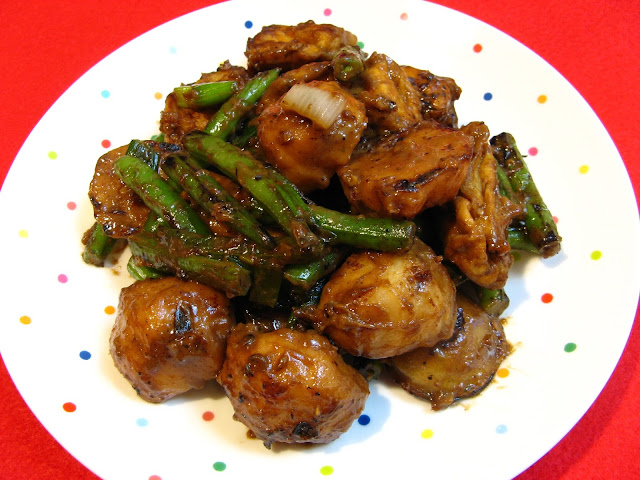
I made this pork belly and fish cake stew using three basic
Korean ingredients: hot pepper powder (gochugaru), hot pepper paste (gochujang),
and fermented soybean paste (doenjang). I am fortunate to live in an area where
there is a large Koreatown, so these ingredients (and the fish cakes) are
readily available at multiple Korean markets. As with all ingredients, there
are multiple brands that can be purchased. My criteria for picking a particular
brand of hot pepper paste and fermented soybean paste was what ingredients were
used to make them. All the brands’ pastes were made in South Korea and the
brand I chose is unknown since the label is mostly written in Korean. I chose
this particular brand because it didn’t have any added preservatives or sugar.
It was amazing to see that many brands had corn syrup high on their list of ingredients!
For the hot pepper powder, it comes in both a fine and coarse grind (I used the
coarse), and from my limited knowledge of this ingredient, I picked the brand
on sale and in the size that wouldn’t overwhelm me (this is used to make
Kimchi, so you can purchase this in 10 lb. (5 kg.) packages and larger!).
Making this dish was a nice change in tastes for me using
the Korean pastes and chili powder. The spiciness is controlled by the amount
of hot chili powder used in the sauce, while the pastes provide the basic
flavor. The amount of hot chili powder probably does not meet the level of
spiciness found in Korean dishes, so feel free to increase (or decrease) the
amount.
Enjoy!



















